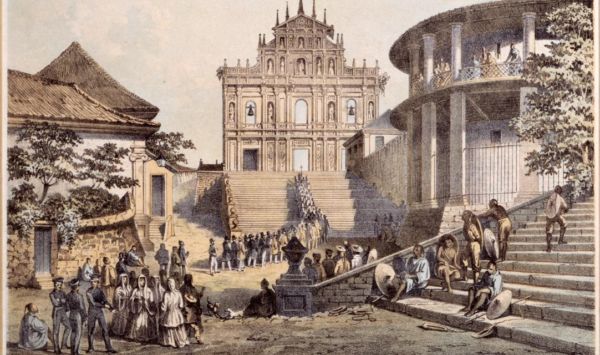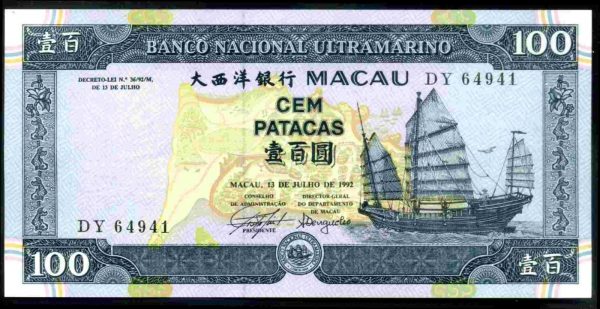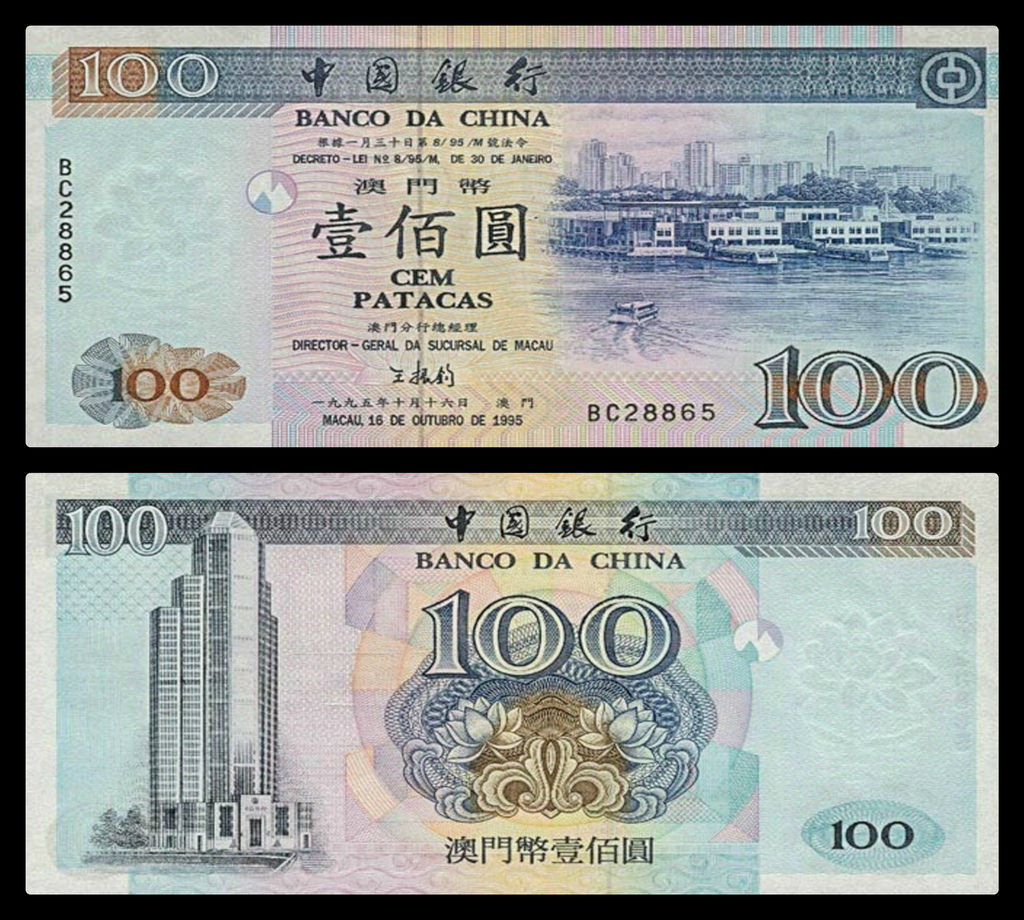We all know the currency of the Pataca is special – there are not many places in the world of the size of Macau Hong Kong which boast their own local currencies. There are definitely not many territories of this size that are as strong or influential on the worldwide finance market – this is particularly true of the Hong Kong Dollar.
Macau is also unique because the Hong Kong Dollar and the Chinese Yuan are accepted and used for regional transactions, as well as Patacas. In fact, back in 1998 only 29.9% of the circulating money in the region was Pataca, with the rest being Hong Kong Dollars. Though exchangeable in Macau banks, the Pataca does not hold value outside the region.
The Pataca is solely for local transaction purposes, and despite having no international value, it is associated with wealth. There is even the Portuguese expression ‘árvore das patacas’ (the patacas’ tree), which relates to a wealthy place and an opportunity to get rich. The history of the Pataca and how it came into the Macau market is an interesting story, and here we take a look at its timeline.
1894
This is the year the Pataca was introduced to Timor and Macau, setting a new path for local transactions. For 300 years, transactions – such as grocery payments – were done according to the value of silver. Payments were carried out in a mix of different currencies, including Guangdong and the already existent Hong Kong Dollar. This kind of transaction resulted in a lot of misunderstandings since no one really knew how to calculate the exact value of silver in relation to the currencies involved.
While other Portuguese sovereignties throughout the world used Escudo (the Portuguese currency used until the introduction of Euro), Macau never had it. Trades were carried out in ‘pangtans’ (current account certificates, bank cheques in silver coin units issued by private banks, among other methods). At first, locals were reluctant to use the Pataca, according to documents dating back to the start of the 20th century. Some BNU managers stated people were so wary of the new currency that they went on exchanging their wages into other foreign silver coins until a few decades later.
1902
BNU’s headquarters were established in Avenida de Almeida Ribeiro and still remain in that pink structure to this day. The decision to establish Macau’s own currency was defined by the Portuguese Government in Lisbon, which had already established branches in India and African countries (then colonies). Banco Nacional Ultramarino was the only banking institution in the region with the power to issue Patacas. The bank is now part of the Portuguese bank Caixa Geral de Depósitos, and Macau’s branch is the only one left, despite having existed in several countries when the Portuguese Government still had colonies.

1906
This is the year the Pataca became the official currency in Macau. 1, 5, 50, and 100 denominations of Pataca banknotes were introduced. The use of foreign money was deemed illegal to strengthen the power of the newly-introduced currency.
1935
The pataca was indexed to the Portuguese escudo, resembling the British Government’s decision to index the Hong Kong Dollar to the British pound.
1944
The World War changed several local practices, including the way money worked. With chaos in Europe, Pataca notes were produced and sent out from London (the local financial system was upside down and BNU found printing out account certificates the best way to ensure people got their money).
With the arrival of hundred of refugees to Macau, things got more chaotic in the city. Since 5 and 10 Pataca notes were being rejected, and the bank had no change to give to everyone who waited in queues, the situation became unmanageable. The government banned ‘pangtans’ and made the use of Pataca mandatory. The first Pataca certificates started being produced in a local printing house, with every single one of them being signed, by hand, by a BNU manager and the Director of the Central Branch of Treasury Services.
1952
BNU started issuing Macau’s first coins, substituting all Pataca notes under 10 MOP to coins.
1980
The local Government created the Monetary Institute of Macau (IEM), which became the region’s monetary authority under which BNU issued Patacas. It was only 15 years later that Bank of China started sharing that power. IEM became the Monetary and Foreign Exchange Authority of Macao known by its initials, AMCM. Upon the transfer of sovereignty of Macau from the Portuguese Republic to the People’s Republic of China, the Macau government simplified AMCM’s designation to Monetary Authority of Macau, keeping the acronym though.

1988
BNU created the first 1000 Pataca note, remaining the highest value note in the city to this day. In Chinese culture, numbers are of great importance, especially date-wise. With that in mind, it’s interesting to look at the date the first 1000 Pataca nota was introduced, on 8-8-1988. In Cantonese dialect, ‘8’ (ba) and ‘getting rich’ (fa; 發) have a very similar sound, which makes this, literally, the main lucky number. Since this unique date only takes place once a century, 1000 Pataca notes were special. 1988 was also the year the Portuguese Coat of Arms was replaced by BNU’s logo, in an attempt of getting all political motifs aside thinking of the then future reunification of the region to China.
1995
Bank of China becomes the second bank with the power to issue the local currency. The same bank started also to issue 10, 50, 100, 500 and 1000 Pataca notes.
1996
This was the year 20 Pataca notes came to life.
Reluctant Beginnings
Although the history of Pataca is clearly turbulent and there were some issues while trying to widen its use, Pataca soon became the standard for every commercial transaction. However, several merchants, taxi drivers, and stores accept Hong Kong Dollar and Chinese Yuan as payment nowadays, but the inverse does not happen. This is because mainland tourists are the ones who do the most spending in Macau, and both currency units are stronger than the Pataca, so it’s a win-win situation for merchants.
In case you get confused about which currency to use when in town, choose Pataca – it’s widely accepted. Keep your other notes for when you travel to Hong Kong or China.
If you are interested in learning more, head to the Currency Museum at the University of Macau.
Currency Museum Room G031, Faculty of Business Administration, University of Macau, E22, Avenida da Universidade, Taipa, Macau,


































